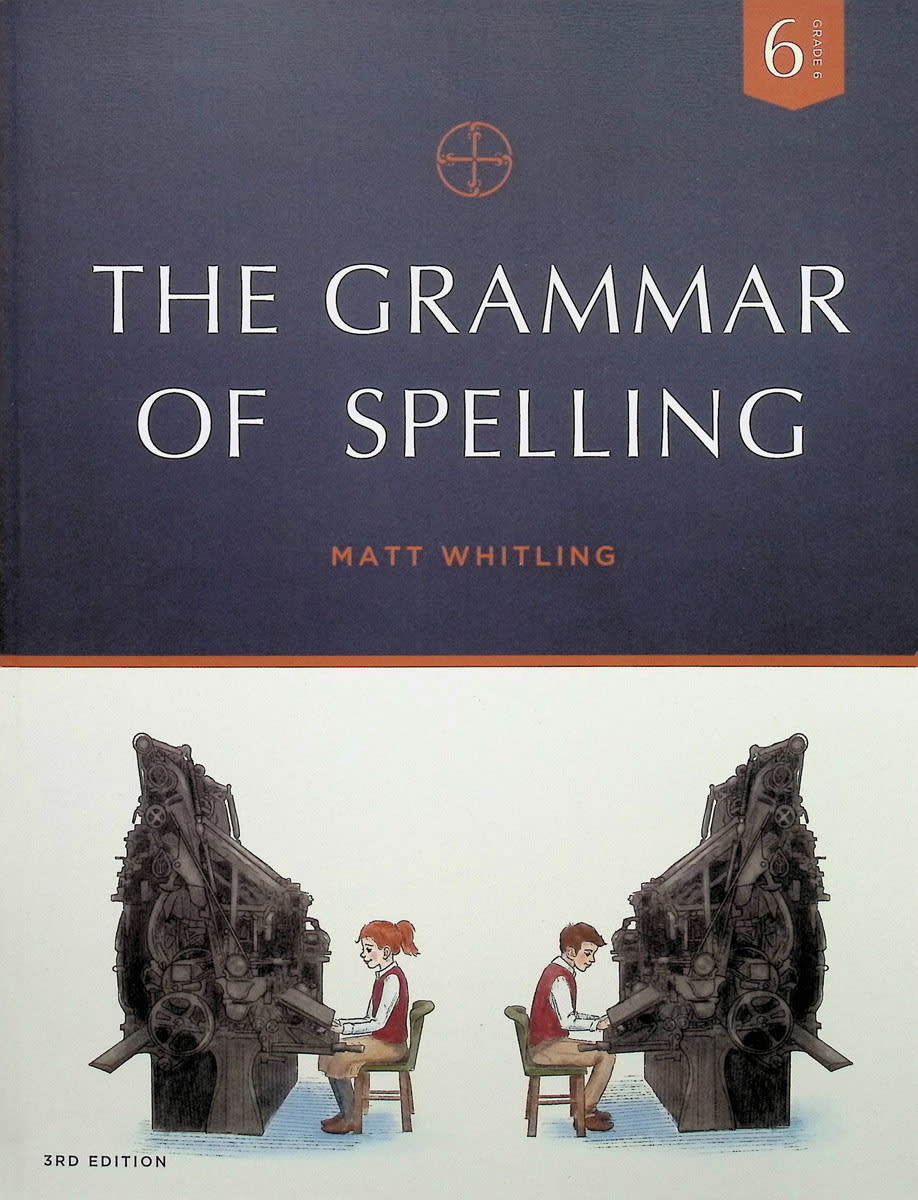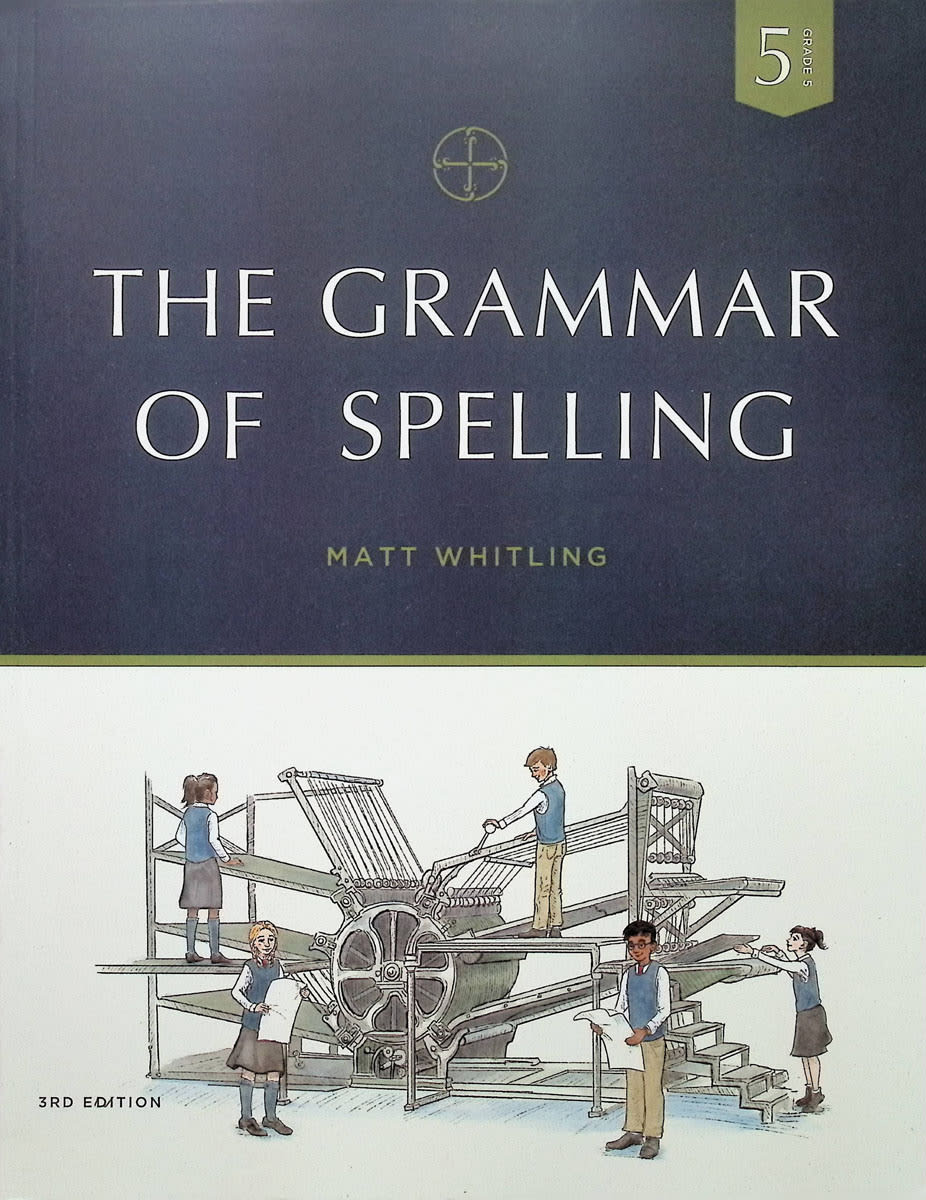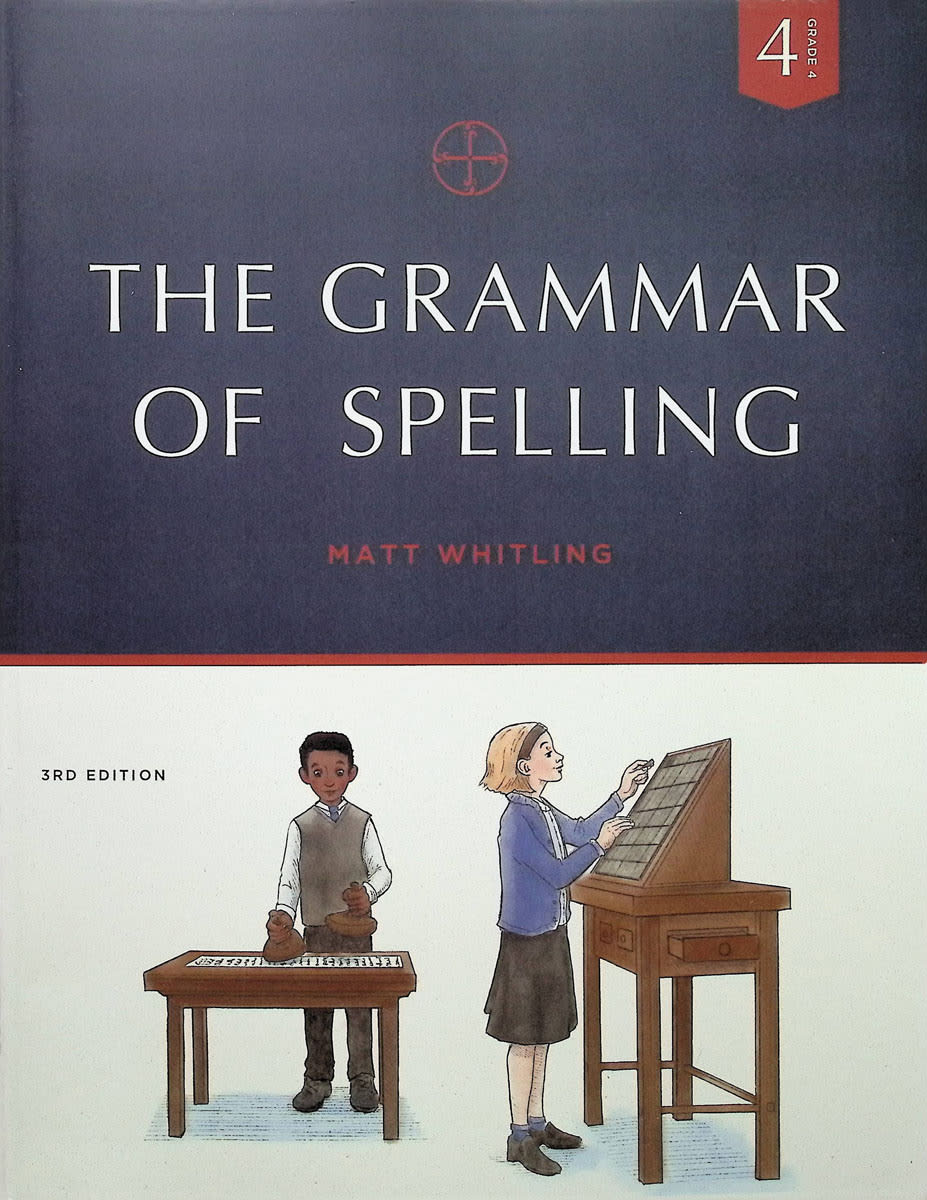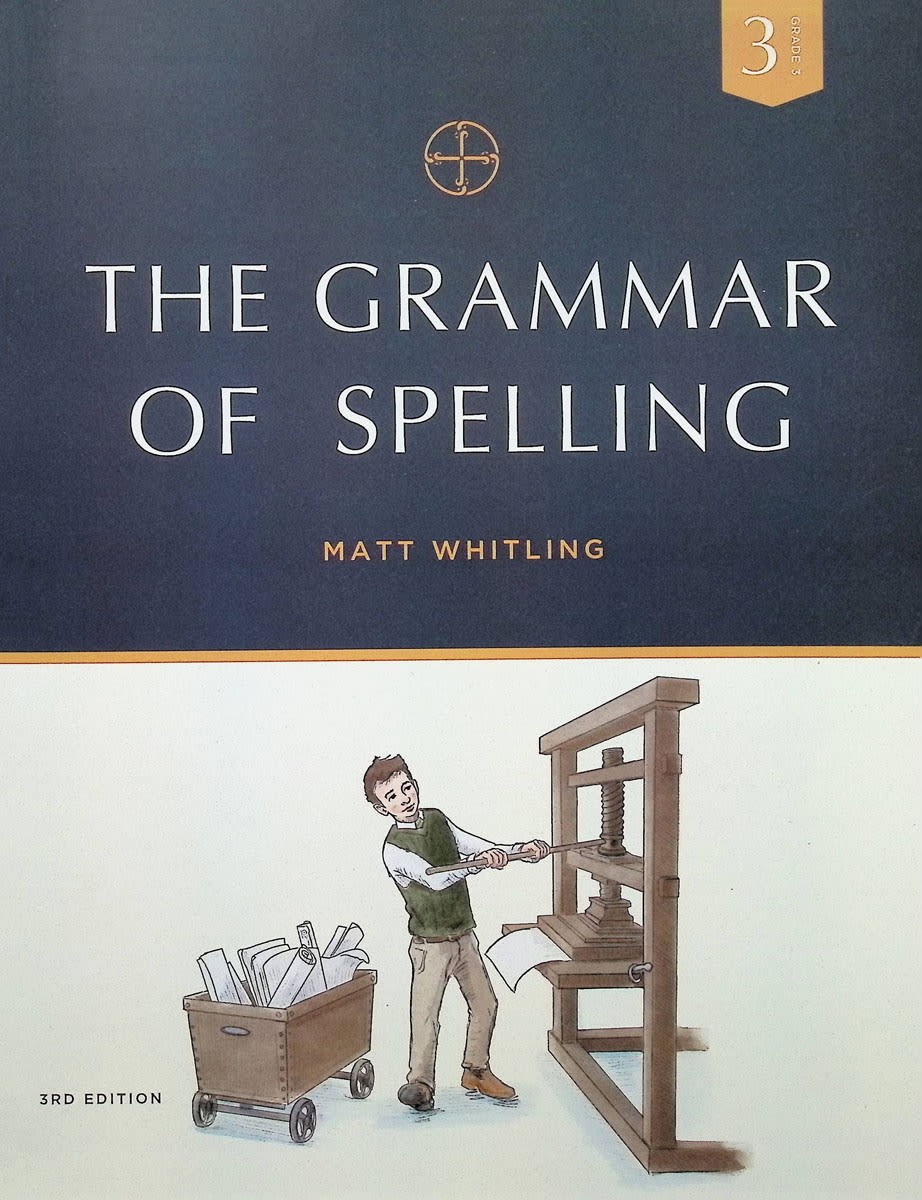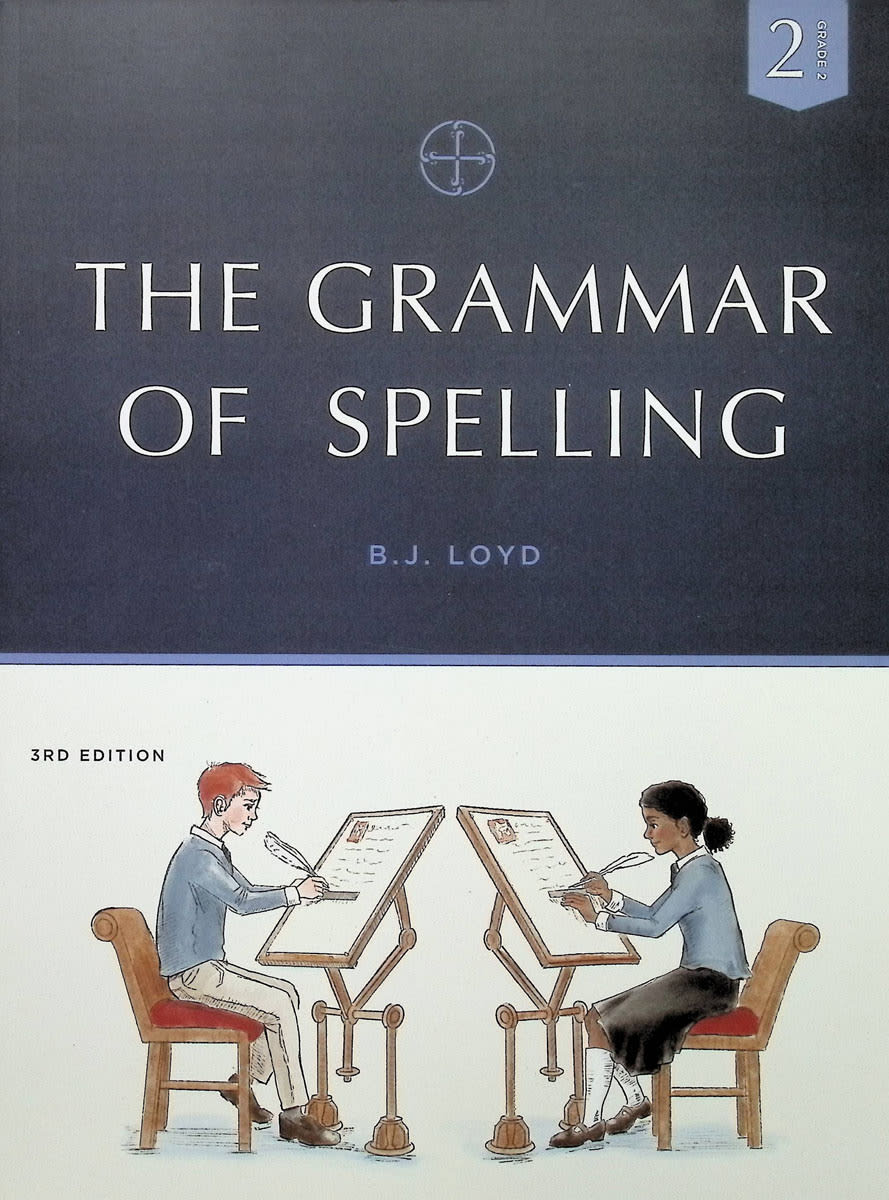The Grammar of Spelling is a series of traditional-style spelling books for students in grades two through six. Each level requires only one book when teaching one student; there are no separate teacher manuals. The books are printed in black and white, and the pages are perforated for easy removal if the parent or teacher wants to hand out pages only as needed.
One might expect a traditional spelling series to teach spelling rules, and this series does--but only five of the most important rules, and those are repeated each year. Page 3 of The Grammar of Spelling: Grade 4 says,
[T]his approach is not a reading-spelling program with twenty-nine or thirty spelling or phonics rules for the student to memorize. It is a program of hearing blends, clusters and vowel sounds, memorizing words, and being able to spell dictated words and sentences.
In some lessons, all the words fit one of the five spelling rules. In other lessons, words are grouped by themes, such as color words, sight words, homophones, books of the Bible, terms relating to an academic topic, and what the program calls stumpers. Extra words are provided to challenge students who will benefit. For the Grade 2 book, a list of about 20 or more extra words is included within each lesson. (You don’t need to teach all of them.) For grades three through six, the books have a list with five extra words for most lessons—words taken from other courses in the Logos Press (companion company to Canon Press) homeschool bundles. For instance, extra words for The Grammar of Spelling: Grade 4 come from Covenantal Catechism 3, Logos Cursive 2 and 3, Noeo Science: Physics 1, and Imitation in Writing: Fairy Tales.
Layout of lessons
The courses all follow the same basic format, just increasing the level of difficulty of the word lists. Rather than completing a variety of exercises using the week’s words, The Grammar of Spelling series has students write the words several times in various ways and write sentences by dictation. Note that children are expected to have learned cursive writing before starting the second-grade book.
Each lesson presents 20 to 25 new words to be learned. Students are also directed to review words from specific lessons. Each lesson has a section titled Directions, which the teacher uses to explain a spelling rule, teach about common features within words, and teach syllabication or other information students are to learn. The teacher should also discuss each word’s spelling and meaning.
Students will complete lesson work on two worksheets found in the book—each a full page, with some exceptions that add an extra page. These worksheets do not have exercises like those in most spelling workbooks. The worksheets have four main parts. The first part is the left column on worksheet A, which lists each spelling word followed by a blank line and an open circle. The teacher will say the word, students repeat it, and then they print it. In the open circles, students number the words to show their alphabetical order. After the teacher has checked the alphabetizing, students print the words in the right-hand column of worksheet A in alphabetical order. Worksheet B also has two columns. In the left-hand column, students print spelling words after looking at the previous page (but not having the words visible as they write). In the right-hand column, they write the spelling words in cursive. Worksheet B usually adds a few lines for students to practice writing extra words.
There are exceptions in some courses where worksheets run onto a second page. For example, The Grammar of Spelling: Grade 2 has lengthier worksheets for cumulative reviews that include words from previous lessons, and the fourth-grade book has boxes on the back of worksheet A for lessons that teach homophones so students can draw images if they find it helpful.
Since dictation is another significant aspect of the course, two dictation sentences are provided within each lesson. The teacher says a sentence and repeats it. Students then repeat it back twice. The teacher dictates it once more and students write it on blank, lined paper. After students have finished, the teacher repeats it once more for students to check their work. Students practice the dictation sentences during the week and are tested on them along with their spelling words.
Tests are taken on blank, lined paper in a specific manner as shown in each textbook. The page is folded and numbered in two columns on the first side. Students write the dictated sentences on the reverse side.
Frequent practice with the words the week they are introduced, coupled with frequent review throughout each course, should cement words in students’ memories.
At the back of each book are three helpful resources: a lesson-by-lesson list of the words taught each week, a master list of the five spelling rules, and a list of six rules for forming plurals.
The Grammar of Spelling depends on heavy teacher involvement, but it also makes it easy for teachers to spot students' difficulties and address them immediately.
Summary
The Grammar of Spelling series fits especially well within a classical curriculum. It should work well in group classes as well as for homeschooling families when a parent has the time to present the lessons.









